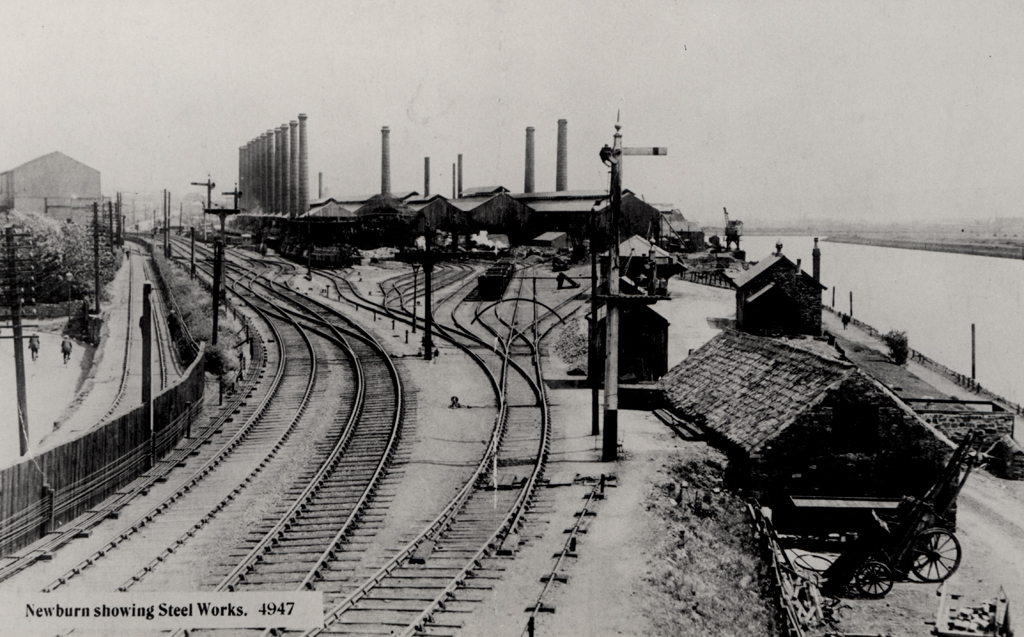
Spencer's Steel Works
Spencer's Steel Works
HER Number
4231
District
Newcastle
Site Name
Spencer's Steel Works
Place
Newburn
Map Sheet
NZ16NE
Class
Industrial
Site Type: Broad
Metal Industry Site
Site Type: Specific
Steel Works
General Period
POST MEDIEVAL
Specific Period
Hanoverian 1714 to 1837
Form of Evidence
Documentary Evidence
Description
The firm of John Spencer and Sons Ltd. was founded in the year 1810 by John Spencer who had been an apprentice in the Sheffield Steel Works, and afterwards was employed for some time at the works of Crowley and Millington at Winlaton. Spencer's original works was established at Newburn in 1822, when he acquired a water mill from the Duke of Northumberland and converted it for file grinding. This mill, later used for rolling steel, was known as Number 1 mill, and was situated in Walbottle Dene, behind the fire station of modern times. In 1824 John Spencer took into partnership his brother William, and in 1830 further land was acquired, along with a 30 foot breast wheel situated some distance from the corn mill. This became the grinding mill proper and converting furnaces were built, and a crucible plant. The works concentrated on making springs for the Railway industry and by 1900 had expanded to cover 60 acres and employed 1800 people. By this time they had diversified into steel plate and in 1904 produced the plate for the "Mauretania". In the 1920s the firm collapsed but was revived in 1928 as John Spencer and Sons, making railway axles and springs, then gun springs and barrels during World War Two. The firm closed in the 1960s but some 19th century buildings survive on the original site in Walbottle Dene, whilst on the later larger site between Lemington Road and the river, one major building from the steelworks has been reused. The stone buildings used by North East concrete on Walbottle Road have been demolished to make way for housing, but were recorded beforehand (Tyne and Wear Museums 2005). The only remaining building is now Clayton House on Walbottle Road. There was an archaeological desk based assessment of the Woodside Haulage Site in 2004 (Tyne and Wear Museums). This was followed by two phases of evaluation trenching in February and March 2005 and April and May 2006 (Tyne and Wear Museums, August 2008). The subsurface remains of the steelworks including the extensive flue system survives in excellent condition. The remains are part of the c.1872 expansion of the steelworks which co-incided with the introduction of a Siemens open hearth furnace for the Siemens-Martin Acid Process of mass production of steel for construction and ship building. The Newburn works represents an early example of manufacturing Siemens steel.
Easting
417000
Northing
565330
Grid Reference
NZ417000565330
Sources
<< HER 4231 >> J. Armstrong, History of Newburn
2nd edition Ordnance Survey map, 1899, 6 inch scale, Northumberland, 96, NE
I.M. Ayris, & S.M. Linsley, 1994, A Guide to the Industrial Archaeology of Tyne and Wear, p.50
Tyne and Wear Industrial Monuments Trust, Newburn Plan Area; C. Peters (Tyne and Wear Museums), 2004, Woodside Haulage Yard, Newburn - Archaeological Desk Based Assessment; Tyne and Wear Museums, 2005, Building Recording Report of Buildings on Walbottle Road, Newburn; A. Telford and S. Speak (Tyne and Wear Museums), 2008, Woodside Haulage Yard, Newburn - Archaeological Evaluation; Underground Tunnels West Newcastle - UK Urban Exploration Forums, http://www.28dayslater.co.uk
2nd edition Ordnance Survey map, 1899, 6 inch scale, Northumberland, 96, NE
I.M. Ayris, & S.M. Linsley, 1994, A Guide to the Industrial Archaeology of Tyne and Wear, p.50
Tyne and Wear Industrial Monuments Trust, Newburn Plan Area; C. Peters (Tyne and Wear Museums), 2004, Woodside Haulage Yard, Newburn - Archaeological Desk Based Assessment; Tyne and Wear Museums, 2005, Building Recording Report of Buildings on Walbottle Road, Newburn; A. Telford and S. Speak (Tyne and Wear Museums), 2008, Woodside Haulage Yard, Newburn - Archaeological Evaluation; Underground Tunnels West Newcastle - UK Urban Exploration Forums, http://www.28dayslater.co.uk